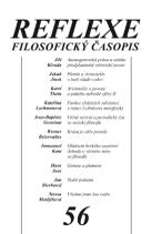Poznámka 10
I. Kant, Critique of Pure Reason: Unified Edition, W. S. Pluhar (vyd.), Indianapolis – Cambridge 1996. – Uveďme jediný, avšak exemplární příklad. Například v pasáži B 132 Kant píše: „Ich nenne sie die reine Apperzeption, um sie von der empirischen zu unterscheiden, oder auch die ursprüngliche Apperzeption, weil sie dasjenige Selbstbewußsein ist, was, indem es die Vorstellung Ich denke hervorbringt, die alle andere muß begleiten können, und in allem Bewußtsein ein und dasselbe ist, von keiner weiter begleitet werden kann.“ (I. Kant, Kritik der reinen Vernunft, I. Heidemann [vyd.], Stuttgart 1966, str. 175 n.) Gyuer s Woodem překládají: „I call it the pure apperception, in order to distinguish it from the empirical one, or also the original apperception, since it is that self-consciousness which, because it (?) produces the representation I think, which must be able to accompany all others (?) and which in all consciousness is one and the same, cannot be accompanied by any further representation.“ (I. Kant, Critique of Pure Reason, P. Gyuer – A. W. Wood, Cambridge 1998, str. 246). Naproti tomu Pluhar překládá: „Or, again, I call it original apperception; (!) for it is the self-consciousness which, because it produces the presentation I think that must be capable of accompanying all other presentations[,] and [because it] (!) is one and the same in all consciousness, cannot be accompanied by any further presentation.“ – I. Kant, Critique of Pure Reason: Unified Edition, W. S. Pluhar (vyd.), str. 177. – Rozdíly mezi oběma překlady vyznačuji znaky: (?) a (!).
Zpětné odkazy: Reflexe 24:I. Kant Critique of Pure Reason
